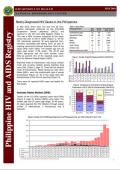What's New
Displaying results 3351 - 3360 of 4052

Resource | Presentations,
This document presents the result of a study which aimed to assess the socio-economic impact of HIV in wide range of areas (income and employment; consumption, assets and savings; coping mechanism; stigma; health; education; gender etc). It also contains information on impact mitigation policies and programmes.
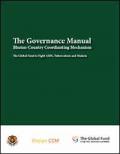
Resource | Tools,
The Bhutanese concept of Gross National Happiness (GNH) is the foundation for development in Bhutan. GNH is based on the principle that happiness constitutes one of the highest of aims to strive for, and without which, sustainable development cannot be achieved. Included in GNH is a “middle path” approach in which spiritual and material pursuits are balanced.
In the light of GNH, Bhutan also acknowledges the requirements and recommendations of the Global Fund to fight AIDS, Tuberculosis and Malaria (“the Global Fund”), concerning eligibility and accountability for grants from the Global Fund. The Country Coordinating Mechanism (“CCM”) was established as a national mechanism to represent key stakeholder constituencies for the three diseases in Bhutan, and in response to the requirements and recommendations of the Global Fund.
As a national stakeholder coordination mechanism, the CCM has no legal foundation. The CCM seeks to establish legal authority for its activities by the end of 2012 in order to enhance eligibility for a wider range of funding sources.
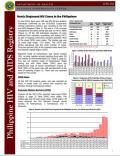
Resource | Fact Sheets,
In June 2010, there were 109 new HIV Ab seropositive individuals confirmed by the STD/AIDS Cooperative Central Laboratory (SACCL) and reported to the HIV and AIDS Registry (Table 1). This was a 173% increase compared to the same period last year (n=40 in 2009) [Figure 1]. Of the 109 individuals reported, 18 were detected from voluntary counseling and testing (VCT) as part of ongoing community outreach activities.
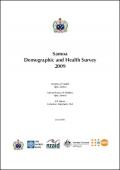
Resource | Publications,
The 2009 Samoa Demographic and Health Survey (SDHS) is a national survey covering all four regions of the country. The survey was designed to collect, analyze, and disseminate information on housing and household characteristics, education, maternal and child health, nutrition, fertility and family planning, gender, and knowledge and behaviour related to HIV/AIDS and sexually transmitted infections.
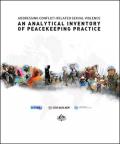
Resource | Publications,
The military component of peacekeeping operations can play a vital role in the protection of women and children as part of its mandated task of protecting civilians. This means not only protecting women from the violence itself, but also supporting individual social and economic recovery afterwards. In support of these goals, we aspire to recruit more women in uniform to help provide this critical aspect of security in peacekeeping operations, and to ensure that all of our personnel understand that enhancing women's safety enhances mission success. The United Nations Department of Peacekeeping Operations Office of Military Affairs (OMA) has been actively engaged in this work, and has participated in assessment missions, with technical and financial support from UNIFEM, to areas where sexual violence has been a prominent feature of the conflict and its aftermath.

Resource | Publications,
Indonesia is facing a progressing HIV epidemic. Despite 20 years of increasingly concerted effort, largely downstream, to prevent the spread of the epidemic, new cases of HIV infection continue to rise. Estimation shows that by the end of 2009 there were 333,200 people living with HIV (PLHIV) in Indonesia. The number of reported cumulative AIDS cases has risen sharply from 2,682 cases in 2004 to 19,973 by December 2009. Among the cases 25% are women.
Outside the protective cover of the family, the education sector, theoretically, provides the best prospects to prevent maturing youth from engaging in behaviors that compromise their long term well-being. The HIV epidemic is clearly a social and behavioral problem where certain conducts in some social-cultural contexts, put the individual at risk of being infected with the inconspicuous virus.
This assessment is about how the education sector in Indonesia prepares students to acquire knowledge and related life skills that will help them prevent HIV infections. Systemic internal review of policies, activities, and related studies were conducted.
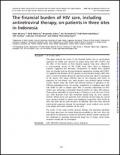
Resource | Publications,
This paper assesses the extent of the financial burden due to out-of-pocket payments for health care incurred by people living with HIV (PLHIV) and the effect of this burden on their financial capacity. Data were collected in a cross-sectional survey of 353 PLHIV from three cities in Indonesia (Jakarta, Jogjakarta and Merauke). Respondents in Jakarta were sampled from one hospital and one non-governmental organization working with PLHIV.
The results of this study confirm previous findings that providing subsidized ART drugs alone does not ensure financial accessibility to HIV care. Thus, the government of Indonesia at central and local levels should consider covering HIV care additional to providing antiretroviral drugs free of charge. Social health insurance should also be encouraged.
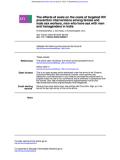
Resource | Publications,
The India AIDS Initiative (Avahan) project is involved in rapid scale-up of HIV-prevention interventions in high-risk populations. This study examines the cost variation of 107 non-governmental organisations (NGOs) implementing targeted interventions, over the start up (defined as period from project inception until services to the key population commenced) and first 2 years of intervention.
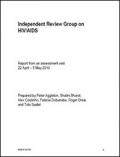
Resource | Publications,
As part of efforts to tackle the HIV epidemic, the Government of Papua New Guinea (GoPNG) has endorsed a National Strategic Plan (NSP) for HIV and AIDS, 2006-2010. A planning exercise for the implementation of this plan is undertaken each year which aims to bring stakeholders together with the goal of developing an approved GoPNG HIV Development Budget and Plan for the coming year, containing details of funded activities to support NSP implementation.
This report begins with a review of the NSP Annual Plan for 2010, followed by an appraisal of progress, future planning and gaps and omissions in each NSP Focus Area. Where relevant, reference is made to ongoing work to develop the National HIV and AIDS Strategy (NHS) 2011-15, both with respect to the process of development and the contents of this strategy. Finally, the IRG has highlighted a number of key priorities for the coming year, both to build upon work already completed and to facilitate easy transition from the NSP to the NHS.






